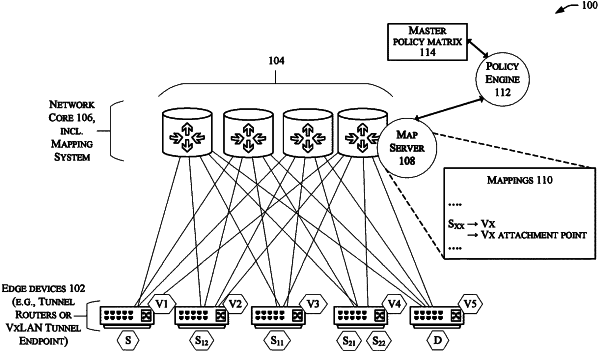| CPC H04L 47/125 (2013.01) [H04L 12/16 (2013.01); H04L 45/56 (2013.01)] | 20 Claims |

|
1. A system comprising:
one or more processors; and
one or more non-transitory computer-readable media storing computer-executable instructions that, when executed by the one or more processors, cause the one or more processors to perform operations comprising:
identifying, by a controller of a network fabric, endpoints associated with the network fabric and services that execute service functions for traffic communicated between the endpoints and through the network fabric;
determining to provision a service chain between an endpoint pair of the network fabric, the endpoint pair including a source endpoint and destination endpoint;
determining, by the controller, a first location in the network fabric at which traffic communicated between the source endpoint and the destination endpoint is to be routed through a first service of the service chain;
determining, by the controller, a second location in the network fabric at which traffic communicated between the source endpoint and the destination endpoint is to be routed through a second service of the service chain;
generating traffic steering directives to be provided to network nodes at the first and second locations in the network to route traffic through at least the first and second services; and
providing the network nodes with respective traffic steering directives that instruct the network nodes to route the traffic through the at least the first and second services.
|